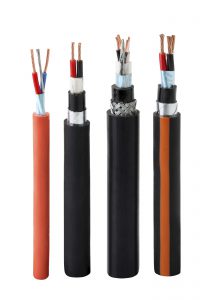If Your Wire and Cable Products “Work”, You’re Good, Right?
(from Nicole Lutz, Galaxy President)
 As a supplier of wire and cable products that focuses on custom constructed items, Galaxy gets a lot of requests for quote for both custom and commodity types of wire. Many times we get a wire or cable to quote that has been appropriately spec’d – the correct insulation type for the electrical requirements, the appropriate jacket for the insulation, the correct materials for temperature requirements, etc. Other times a customer doesn’t really know what they need, and we help them all along the way. For those that have an existing specification, we’re happy to provide a quote for a wire or cable with any insulation and jacket material that a customer needs. However, more often than not, a simple conversation and subsequent questions answered might lead us down a path to realizing that perhaps something can be tweaked to improve functionality, lead time, performance, and of course, price.
As a supplier of wire and cable products that focuses on custom constructed items, Galaxy gets a lot of requests for quote for both custom and commodity types of wire. Many times we get a wire or cable to quote that has been appropriately spec’d – the correct insulation type for the electrical requirements, the appropriate jacket for the insulation, the correct materials for temperature requirements, etc. Other times a customer doesn’t really know what they need, and we help them all along the way. For those that have an existing specification, we’re happy to provide a quote for a wire or cable with any insulation and jacket material that a customer needs. However, more often than not, a simple conversation and subsequent questions answered might lead us down a path to realizing that perhaps something can be tweaked to improve functionality, lead time, performance, and of course, price.
At Galaxy, we live in the wire and cable world all day long. Most of our customers don’t; they live in the world in which they design and build their products – and they look to whatever resources they can find online to spec in the wire or cable for a project. Do they get it right the first time? Sure, sometimes they do. However, many of the commodity and commercial materials that are readily available are often not quite right, or may even be overkill. The designers are limited to the information they have at hand – usually a commodity catalog – to put on their requirements list. So if it works, it’s good, right? Wrong. This is where the opportunity to improve begins.
One of Galaxy’s biggest success stories in re-specifying materials happened when an end user needed high temperature hook-up wire harnesses for their OEM product. The engineers there did what many typically do – they looked up a commodity type of wire by temperature rating, selected it, and put it on their drawing. When Galaxy received the large bid package for the wire harnesses, we realized that this Teflon wire with silver-plated copper conductors was a big chunk of the bill of materials (BOM) costs. So we checked back with the customer. High temperature was required, but was 200°C required? Could the product still function at 150°C? As it turned out, it could. So, with a simple switch of the UL style to one that’s not standard, we presented a SIX FIGURE costs savings in the package, all by paying attention to the application, and asking the customer what they really needed for the application.
Some people think the word “custom” equals expensive. It doesn’t have to be expensive. Galaxy and its team are trained to ask the right questions and offer the best solutions. We’ll either confirm you’re getting the right product (at the right price), or get you a better one or a better value. What have you got to lose?
